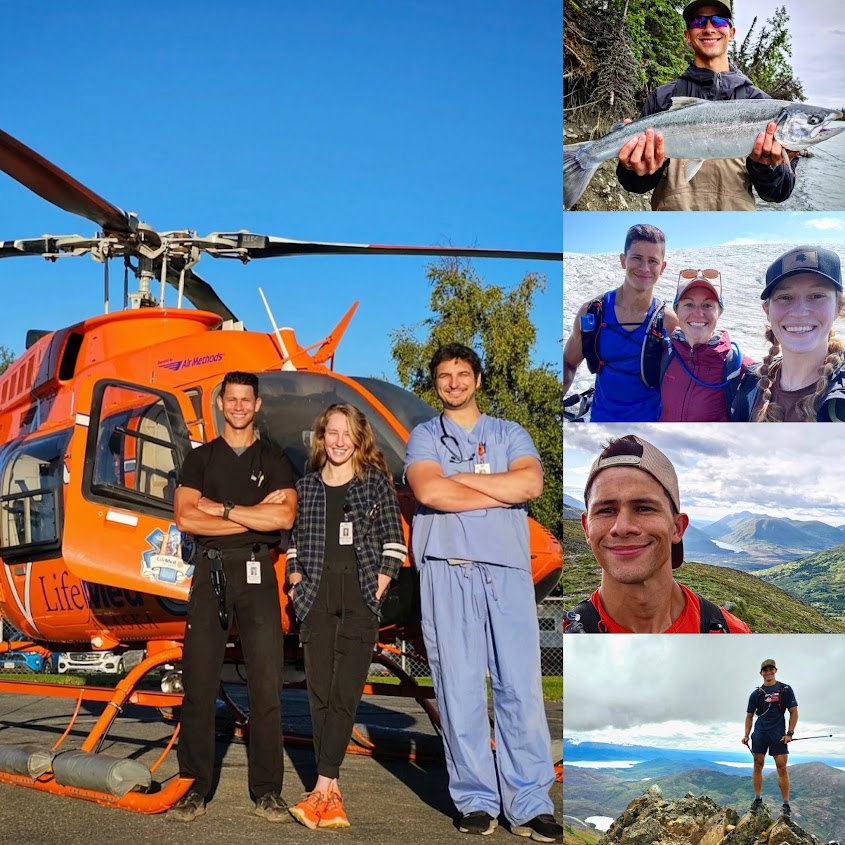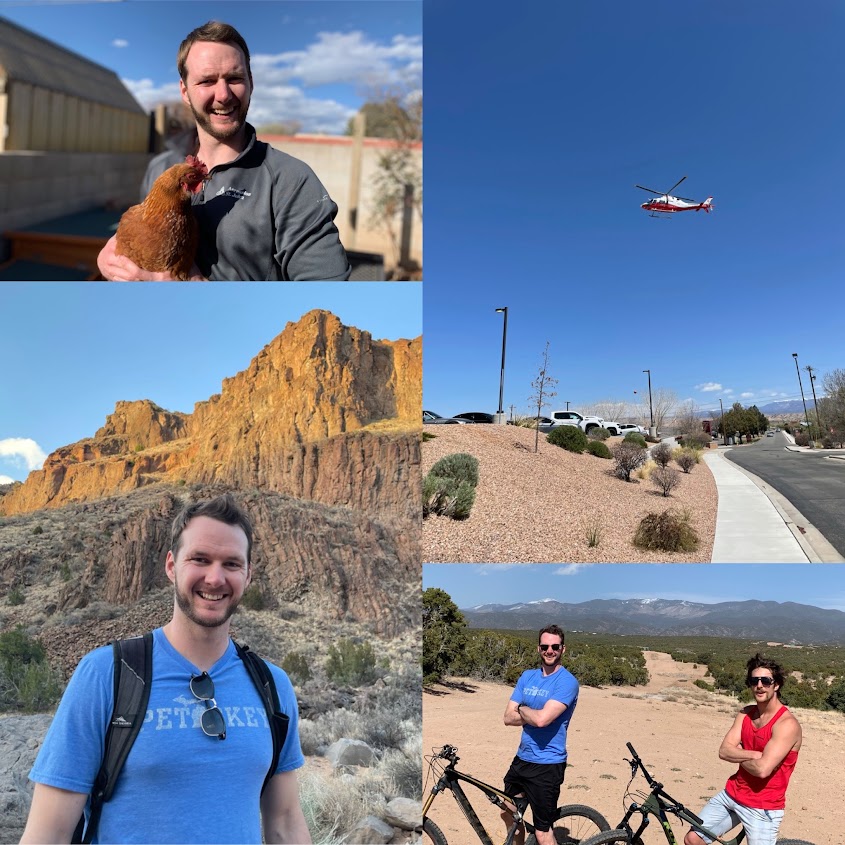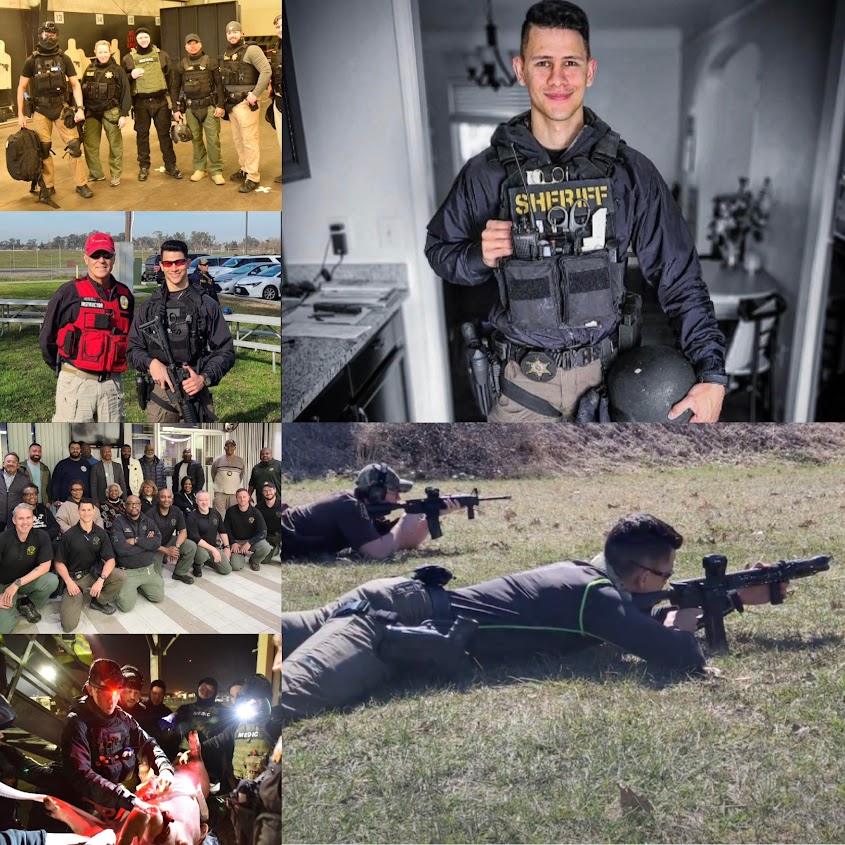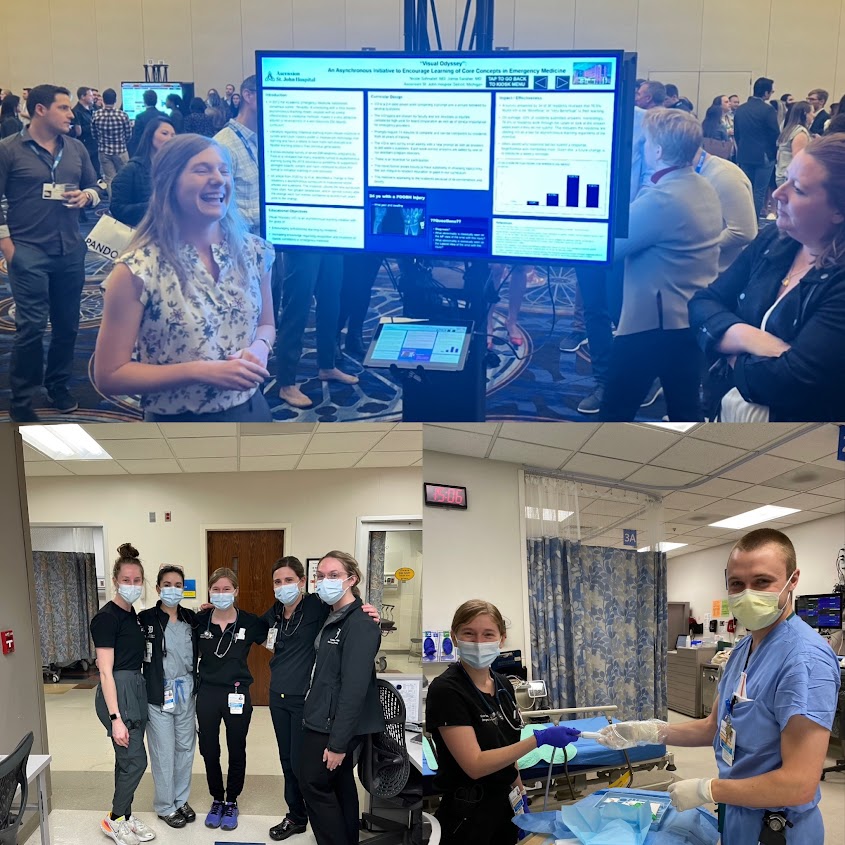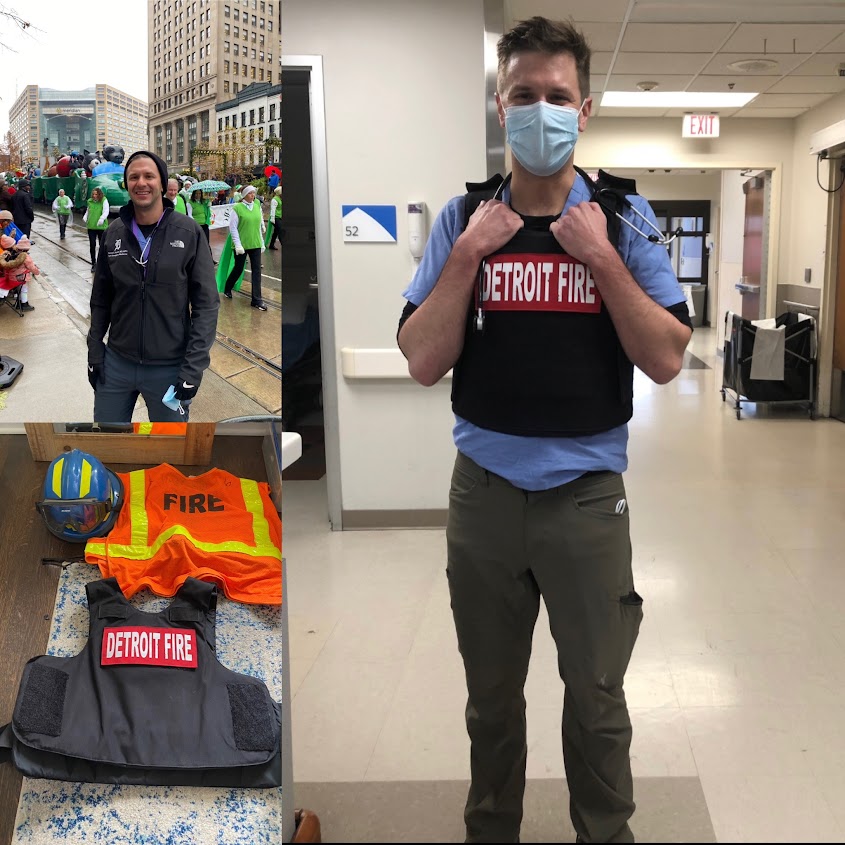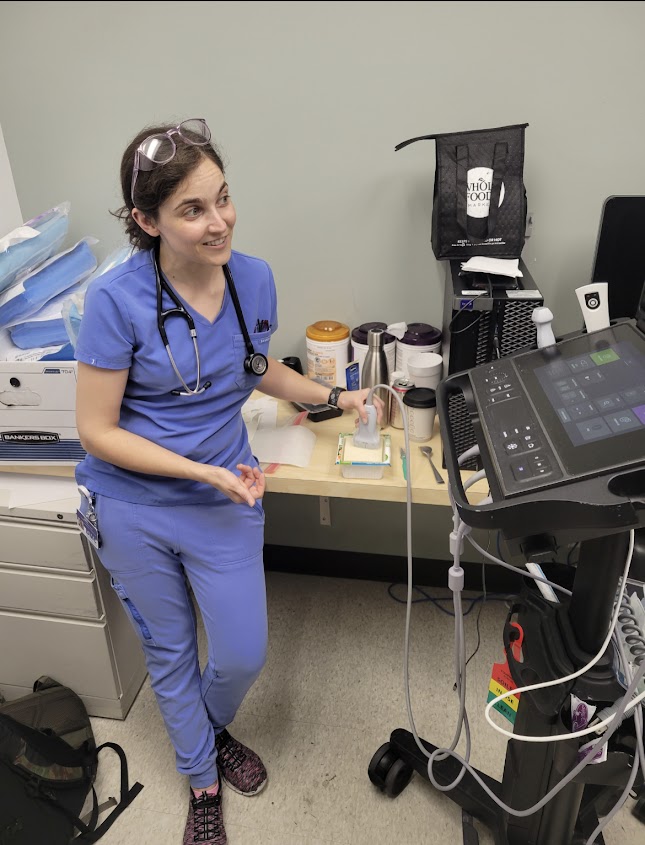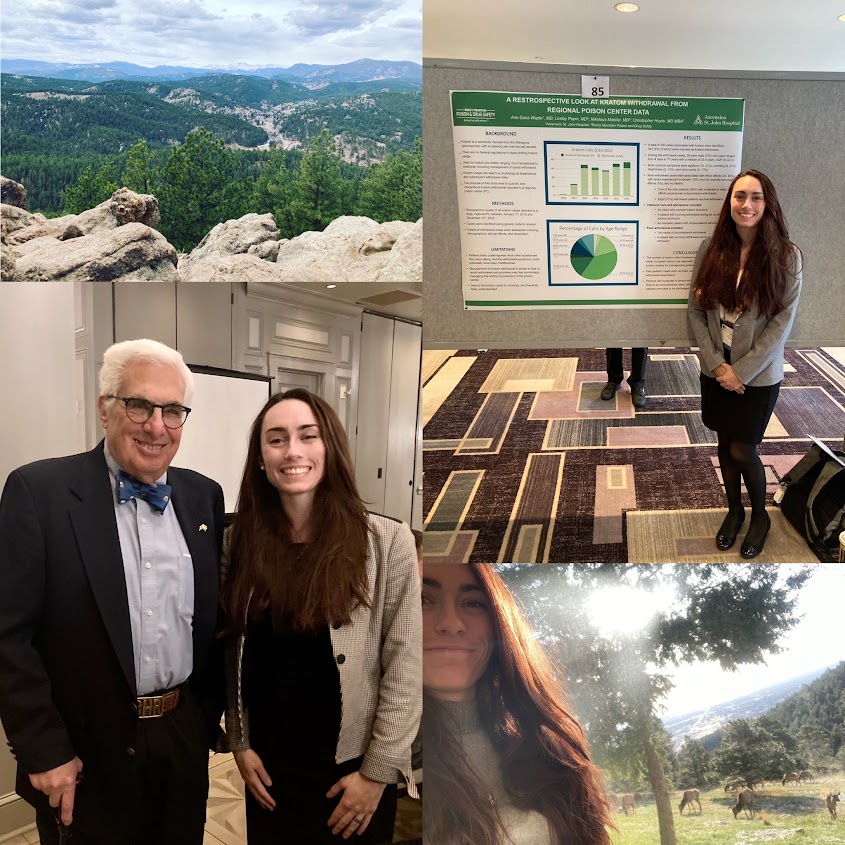Choose from many different elective options including: Rural Medicine in Alaska, Sports Medicine, Toxicology, Critical Care, Advanced Ultrasound, EMS, Medical Education, Wilderness Medicine, PEM, Flight Medicine, Resuscitation. Or you can make your own elective!
Here is what a few of our residents have said about their elective experiences!
Alaska- John Chinchen, MD (multiple residents usually go each year)
Description: During your 3rd year of training, you have the opportunity to do a one month elective in a small community hospital located in the Kenai Peninsula in Alaska. You stay either in a condo provided by the hospital, or in the guest house of the medical director who is essentially one of the coolest people on the planet. The Kenai is arguably the most beautiful part of Alaska. It is bordered by ocean to the north, south, and west, and impressive mountain ranges to the east. If you enjoy the outdoors, it is a paradise like no other. From hundreds of breathtaking hikes to world class salmon fishing on the Russian and Kenai river, the possibilities are endless. Locals who have lived there their entire lives will tell you that they still haven’t done and seen everything. As far as medicine goes, you work 12, 12 hour shifts. The hospital is a level IV trauma center with limited consultants with the closest level II center being several hours away in Anchorage requiring helicopter transport, and the closest Level 1 is in Washington state and requires fixed wing transport. The contrast between this shop and St. John is striking. At St. John, you will become an expert in resuscitating critically ill patients, and an artist in managing trauma. The Kenai provides a balance to this as you will become more well-versed in managing less acute patients without the help of endless consultants. There is no ortho, optho, ENT, etc to call so you figure it out on your own. You are a much more independent provider.
Why did I choose this elective? I love being outside. I pretty much spent every day off hiking a mountain, running, seeing a cool town, or salmon fishing. Additionally, my job for next year is at a community hospital in a small, rural town, so I wanted to get some firsthand experience practicing in this setting in residency before I go and do it for real.
What was your favorite part? Overall, it was a tie between the Harding Icefield trail and catching salmon on the Kenai river. I’ve seen some pretty cool stuff, but the ice field was absolutely mind blowing. The 3 of us who were rotating in the Kenai spent the day hiking there and it was a truly unforgettable experience. My favorite part from a medical standpoint- we had a level 1 trauma come in while both Marisa (another St. John resident) and I were working, and we were able to use our training from St. John to manage it effectively together. It was a unique experience being able to showcase the level of proficiency in trauma and in performing critical procedures gained from our program to the emergency physicians who were working at this small hospital that only sees a limited amount of trauma.
Would you recommend it to others? Absolutely. This was hands down my favorite month of residency. Anyone who enjoys the outdoors or who wants the perspective of working at a small, rural community shop would have a blast here. The cost of getting out there can be expensive, and credentialing can take a while. I would recommend talking to Dr. Butki about it sometime early to mid second year for more details.
Rural ED in New Mexico – Blake Sanford, MD
Description: I rotated in the Presbyterian Espanola Hospital Emergency Department, a rural ED with a large catchment center in beautiful Northern New Mexico
What made you choose this elective? Dr. Gary Kanner, a St. John graduate works at the hospital and highly recommended the rotation as it is a way to experience a different style of medicine in a less resourced hospital with a unique patient population.
What was your favorite part? New Mexico is simply stunning. I was blown away with how cool it is. After this rotation, I would consider moving there. There is skiing, mountain biking, and hiking all at your fingertips! I also enjoyed seeing a different side of emergency medicine in a more rural setting.
Would you recommend it to others? Absolutely. I think having an experience outside of a fast-paced, well-resourced, urban hospital should be a part of every resident’s training. And it was a ton of fun! I would highly recommend this elective. I had a great time and I believe it made me a better clinician. Licensing and credentialing can take awhile, so be sure to start the process early if you are interested.
Advanced Ultrasound- Kaitlin Natole, MD
What made you choose this elective? I am interested in an ultrasound fellowship and chose this elective to get some opportunity for advanced ultrasound techniques. I also wanted a chance to spend more time in our resuscitation bay to practice the utility of ultrasound in the critically ill patient.
What was your favorite part? Getting additional hands on experience in the resuscitation bay was definitely my favorite part! Scanning shifts allow the flexibility to spend additional time in resus and be present for all the procedures! I also spent some extra time reviewing articles about up and coming uses of ultrasound in the critically ill patient. Hopefully in the future scanning shifts will include the use of resuscitative TEE as well! I also got to participate in additional off site scanning sessions, teaching experiences at WSU, and a collaborative didactics event with the other residencies in the Detroit area!
Why would you recommend it to others? An ultrasound elective is a great way to have a flexible schedule, get some hands-on ultrasound experience, practice advanced ultrasound techniques, and spend more dedicated time in the resuscitation bay for procedures
Tactical Medicine- John Chinchen, MD
Description: Serve as a sworn Sheriff’s deputy on the Wayne County Special Response Team (SRT). Train twice per month with the team.- one live fire training per month building proficiency with various weapon systems (Rifle, pistol, shotgun, etc). The other training day focuses on team movement and tactics; your role is to implement tactical medicine into these trainings as you deem it appropriate. The function of the SRT is primarily to respond to active shooters, barricaded gunmen, and serve high risk search warrants. Secondary roles include providing security at events, or providing security for high profile individuals (i.e political figures). Tertiary roles involve educating the community (school shooter training, etc). Additionally, St. John will send you to California to receive 2 weeks of training at The International School of Tactical Medicine prior to you becoming involved with the team. Practicing emergency medicine is very different in an austere environment compared to in the hospital, so proper tactical training is necessary before going out on calls for both your own safety and the team’s safety. Once you have successfully completed the training in California, you can begin training with the SRT. It is ultimately up to the team’s Captain if you will be sworn in and deputized.
Why did you chose to become involved in tactical medicine? One of the main reasons I wanted to do my residency at St. John was specifically for the opportunity to become involved in tactical medicine and train with the SRT. Tactical medicine essentially combines all of my passions- I enjoy working out and maintaining a high level of physical fitness, and I am also a 2X state champion in practical pistol shooting. These things combined with my love for emergency medicine made the SRT very appealing to me. Volunteering my medical skills to those who are putting themselves into dangerous situations to keep us safe is my way of giving back to the community. Wherever I work in the future, I plan on continuing to volunteer as a physician on my city’s SRT/SWAT team if possible.
What was your favorite part? A few months ago we did a joint operation with the DEA and seized over 50 lbs of various drugs including fentanyl, heroin, meth, and cocaine. I also thoroughly enjoyed the training in California. I was able to practice procedures such as digital intubations, cricothyrotomies, chest tubes, etc under simulated austere conditions. It is much more challenging trying to intubate in a dark room using a headlamp to the tune of small arms simunition fire than it is in a well lit resuscitation bay with trained medical staff to assist you.
Would I recommend it to others? Tactical medicine isn’t for everyone, but I would recommend it to residents who don’t mind the physical nature of the job, are comfortable around and somewhat proficient with various firearms, who thrive in high stress situations, and who most importantly have a passion to serve alongside law enforcement. At the end of the day, your primary role is to provide care to those in harm’s way, so striving to be the best emergency physician that you can be is the top priority above all else.
Medical Education – Nicole Schnabel, MD
On the Medical Education Elective I did bedside teaching shifts with medical students and shifts in resus helping to supervise the interns as they did procedures. I also used part of my time on the elective to submit a presentation to the CORD Academic Assembly. I chose this elective so I could spend time teaching in the department and I loved every second of it, especially getting to spend quality time with the interns. 10/10 would definitely recommend to those interested in teaching or academics.
Pediatric Emergency Medicine Away Rotation – Annika Van Wieren, MD
A nice thing at St John’s program is that in addition to a month of elective, you also get time for a “selective”, which is 2 weeks of elective time, with the other half of the month spent at one of our freestanding EDs (to get time doing community EM). I was able to do my selective as a 2 week away rotation at the Carolinas Medical Center’s Pediatric ED. Our PEM rotations are very robust at St John, but I was interested in seeing a different hospital system and rotating somewhere with a PEM fellowship. I had an amazing time during my rotation, saw many high acuity pediatric patients, and got a ton of procedures (there’s a reason I had the highest number of non-sim LPs in my class). I loved branching out, meeting new people, seeing how EM was done in a different facility, and spending some weeks in the beautiful scenery. I was the first person to do a rotation at this hospital and Dr. Nouhan (our program director), our program coordinator, and the GME leadership at the hospital were all super supportive and worked with me to make everything happen.
EMS- Daniel Kaisler, MD (Additional EMS experience outside of the required rotation 3rd year)
Having interests in EMS, pre-hospital medicine, and fire-rescue, I completed an EMS elective. This
involved attending EMS related meetings at varying levels of administration, ride-alongs with Detroit
Emergency Medical Services (DEMS), and as it was November, working with the EMS teams at the
Thanksgiving Day 5K race and Thanksgiving Day parade in downtown Detroit. Through attending these meetings, I learned about EMS leadership and administration and witnessed the issues and decisions required by leaders in this field. Working with DEMS was not only very exciting (we are issued a bullet-proof vest to wear), it allows residents to experience the perspective and practice of our EMS partners. Plus, the EMS and firefighters are fun to hang out with and make great food. They always get a kick out of having a “doc” aboard. Take this elective if you have the above interests or if you seek a different perspective into the lives of our patients and are seeking EMS experience beyond the required rotation. Entering a patient’s home on a call is a completely different experience than seeing them in our department on our terms. Emergency medical care in the field is often very different than the care we deliver in the hospital setting and requires creative thinking and practice in a changing and often uncontrolled environment.
Critical Care- Natalie Wiseman, MD, PhD
I did an outside rotation in MICU because I wanted the extra experience and face time as I prepared to apply for Critical Care fellowship. I did a second elective, which was a little work to set up, as a bonus “senior” in the MICU here, focusing on evals, procedures/teaching procedures, and being senior for a small number of patients. I enjoyed getting to share my favorite tips/tricks for procedures with the IM interns, and enjoyed doing evals and making the initial plans for critical patients. These were good choices for anyone interested in Critical Care fellowship, to get your number of “IM” months up, and to get exposure to another style of MICU.
Toxicology- Aria Darling, MD
Description- I was able to do two elective rotations in Medical Toxicology, both at DMC, as well as in Colorado. These rotations included taking poison center calls with the fellows, creating educational lectures for rotators, and seeing bedside toxicology and addiction consults.
What made you choose this elective?- Every quarter, we have virtual toxicology grand rounds, and I always found it so interesting that I wanted to pursue a more dedicated elective. I was fortunate to be allowed two separate months to do this. I enjoyed them so much that I am applying for a medical toxicology fellowship this year.
What was your favorite part?- Both programs were so unique, and I truly had a fantastic time at both. In Colorado, I was able to meet Dr. Barry Rumack, one of the co-creators of the Rumack-Matthew nomogram used in tylenol overdoses, as well as take calls from places like Hawaii! At DMC, I was able to see more patients that suffered from various addictions, and to watch the progression through their hospital course as we were able to help them through treatment.
Would you recommend it to others?- Undoubtedly. I think that having a better understanding of the pharmacology and physiology behind overdoses and exposures help you become a better doctor, even if you don’t plan on pursuing a career in toxicology. So often, we prescribe medications based on experience/protocol, but I feel like these rotations really helped me with the entirety of emergency medicine in understanding WHY. Additionally, I feel that so many of the review questions for toxicology become a reflex, but there’s something different about actually seeing things like an antimuscarinic toxidrome in person. Board review vs. in person exposure are not the same in my opinion. Anyways, they were both FANTASTIC experiences that I think I will carry with me for the rest of my career.
Med Ed/Didactic Curriculum Development- Annika Van Wieren, MD
I also did an off-the-beaten-path elective. I was interested in developing my teaching and leadership skills and contributing to resident learning in a meaningful way. I had the idea to spend my elective month putting together lectures for resident didactics. This wasn’t one of the traditionally offered electives, but program leadership was all for it. Once I developed my elective goals and schedule, I was able to spend my month exactly how I wanted in order to advance my education. While the elective itself was exciting (if only to me), I think the most incredible thing about it is that I was able to customize my elective to my own personal goals. I was encouraged every step of the way and I could not have asked for a more supportive program leadership. In short, if you have a specific goal or area of interest, this residency will work with you to make it happen.
